Results 6,791 to 6,800 of 12091
Thread: Anandtech News
-
03-13-17, 03:10 PM #6791
Anandtech: MWC 2017: AGM Preparing IP68 Rated Snapdragon 835 Smartphone with 8GB DRAM
AGM may not be a household name for the vast majority of people living in Europe and the U.S., but this is a well-known maker of rugged phones that sells its products in many countries around the world. The company’s lineup currently includes six IP68-rated models, and in order to attract the attention of the mass market, AGM is preparing its new X2 model that weds a rugged design with the latest technology. At MWC 2017 this year, the company announced its new flagship that will be based on Qualcomm’s Snapdragon 835 and will rival leading-edge smartphones from big makers.
The Old X1
To put this into context, AGM’s current X1 flagship is based on the Qualcomm Snapdragon 617 (eight ARM Cortex-A53, Adreno 405, X8 LTE, etc.). The X1 is equipped with up to 4 GB of DDR3 RAM, up to 64 GB of eMMC NAND, two 13 MP back-facing cameras, a 5400 mAh battery and comes with a 5.5” FHD AMOLED display featuring Gorilla Glass 3. The phone is IP68-rated against dust and immersion in water (over 1 m depth, but other conditions are specified by the manufacturer), yet it looks considerably neater than typical rugged designs. While AGM’s phones come in rugged enclosures and can survive in situations when other handsets might fail, none of them are MIL-STD 810G-graded.
Gallery: AGM X1
The New X2
While the AGM X1 is positioned by the manufacturer as an affordable rugged phone for extreme sports and other outdoor activities, but it is definitely not a phone from the premier league. In the coming months (in mid-2017) AGM plans to introduce its X2, which will be positioned as a premium smartphone and will feature Qualcomm’s latest Snapdragon 835 SoC (10nm, eight new Kryo cores, Adreno 540, X16 LTE, LPDDR4X, etc.). This is along with 8 GB of DRAM, 256 GB of NAND, two cameras, a ~6000 mAh battery (there will also be the AGM X2 Pro with a 10,000 mAh battery) an omni-bearing ambient sensor and so on. Based on official images of the AGM X2 (originally published by AGM and AndroidHeadlines), it is possible that the phone has four antennae and thus supports 4x4 MIMO, one of the three features required for Gigabit LTE.
The AGM X2 will be one of the first IP68-rated Snapdragon 835-based smartphones with a rugged design. Meanwhile, for AGM, this will be a debut on the market of premium smartphones that compete against Apple’s iPhones or Samsung’s Galaxy S-series. The price of the AGM X2 is unknown, but it will likely vary significantly depending on the store and the region. For example, the AGM X1 can be bought for $260 in China or for over $480 in the U.S.
More...
-
03-14-17, 06:29 AM #6792
Anandtech: HiSilicon Kirin 960: A Closer Look at Performance and Power
HiSilicon looks to build on the Kirin 950’s success by adopting ARM’s latest A73 CPU cores and Mali-G71 GPU for the Kirin 960. Still manufactured on a 16nm FinFET process, the Kirin 960 also packs twice as many GPU cores as its previous SoC. Let’s take a closer look at how these changes affect performance and power consumption.
More...
-
03-15-17, 08:18 AM #6793
Anandtech: AppliedMicro's X-Gene 3 SoC Begins Sampling: A Step in ARM's 2017 Server A
There has been a lot of recent movement in the ARM Server SoC space, with three major players. The third player, AppliedMicro, has been acquired by MACOM. MACOM has announced that the third generation 16-nanometer FinFET Server-on-a-Chip (SoC) solution, X-Gene 3, is sampling to "lead customers". Despite all the products so far on ARMv8, the server world continues to mature and to move forward.
The AppliedMicro X-Gene 3
Back in 2015, we reviewed the 40 nm 8-core X-Gene 1 (2.4 GHz, 45W), which found a home in HP's Moonshot processors. Performance wise the SoC was on par with the Atom C2750 (8 cores @ 2 GHz), but consumed twice as much power, which in our review to an overall negative conclusion. The power consumption issue was understandable: it was baked on a very old 40 nm process. But the performance was rather underwhelming, as we expected more from a 4-issue superscalar processor at 2.4 GHz. The Atom core, by comparison, was only a dual-issue design and offered similar performance at a lower frequency.
Moving forward, we got the X-Gene 2. This was a refresh of the first design, but built on 28 nm. It was still at 2.4 GHz, but with a lower power consumption (35 W TDP) and a smaller die size of around 100 mm². Despite the relatively lackluster CPU performance, the overall efficiency increase meant that the X-Gene 2 did find a home in several appliances where CPU performance was not the top priority, such as switches and storage devices.
MACOM, the new owners of the X-Gene IP, claim that the new X-Gene 3 is a totally different beast. The main performance claim is that it should be >6 times faster in SPECintRate than X-Gene 1 or 2. That performance increase is mostly because the new SoC has 4 times as many cores: 32 rather than 8. Besides the 32 ARMv8-A 64-bit cores in X-Gene 3, it will also include eight ECC capable DDR4-2667 memory channels, supporting up to 16 DIMMs (max. 1 TB), and 42 PCIe Gen 3.0 lanes.
MACOM's reference X-Gene 3 platform has everything working at near full speed: all 32 cores are functional and run as fast as 3.3 GHz. The SoC design gives 32 MB of L3 cache through a coherent network, and we are told is 'at full speed'. PCIe, USB and integrated SATA ports all work at full speed also. Memory is initially limited to 2400 MT/s instead of 2667 MT/s, but considering that the current memory market only offers buffered DDR4 DIMMs at 2400, that is not an immediate issue.
That set of specifications is impressive, but if the X-Gene 3 really wants to be a "Cloud SoC", performance has to be competitive. We look forward to testing.
The ARM Competition
The other two players are Cavium and Qualcomm.
Cavium has been on a buying spree as of late, acquiring Broadcom Vulcan IP and also Qlogic, a network/storage vendor. If Cavium can inject all that IP in it's Thunder-X server SoC line, its next generation could be a very powerful contender.
Qualcomm will have its 48-core Centriq-2400 SoC ready by the second half of this year, and it will run Windows Server.
Predicted Performance Analysis: Xeon-D Alternative
The only performance figures for X-Gene 3 we have seen so far are the ones found in a Linley Group white paper that can be accessed here:
Based on testing of the current configuration of 3.0GHz CPU frequency and DDR4-2400, the company expects the chip to deliver a SPECint_rate2006 (peak) score of at least 500 when running at its peak speed of 3.3GHz and DDR4-2667 and with some additional hardware and compiler tuning.That benchmark value is the basis for the claim of "6x more powerful than the predecessor". We can somewhat predict how this can be possible, since SPECInt_Rate2006 scales almost perfectly: 32 cores instead of 8 already give us a 4 times increase. In order to get an overall 6x bump in performance then, each core must be (overall, including frequency) about 50% faster.
Most of the performance boost will come from the frequency: as the SoC can boost to 3.3 GHz on X-Gene 3 over the 2.4 GHz X-Gene 2, this translates to a 37.5% increase. The rest of the gains are most likely related to IPC improvement, in branch prediction and TLB architecture. All in all, 6 times higher performance is not an outrageous claim, but there are few snakes in the grass to consider.
Firstly, MACOM extrapolates from numbers at 3 GHz to 3.3 GHz. Thus the final frequency for the parts is still at the whim of tweaking and optimization, and may result in an increase in TDP over 125W. Also to note is that "additional hardware and compiler tuning is necessary", which is a general term for expected software improvements. While that might turn out to be true, other companies have promised similar and been unable to deliver, so until there's some proof it might be hard to determine at this point.
Last year APM estimated that the new X-Gene 3 would achieve 550 SPECInt_Rate2006 at 3 GHz. That claim has been revised to 500 at 3.3 GHz.
The graph above also seems to show SPEC scores run with GCC, as most published scores place the Xeon E5-2580v4 at 669. While we favor results obtained with GCC too as they more realistic, based on experience we are wary that the graph above could paint a rosy picture of X-Gene's performance.
The Linley Group states:
“X-Gene 3 can handle a broad range of cloud workloads, including scale-up and scale-out applications. The processor excels on big data, particularly in-memory databases, because of its high memory bandwidth."
The 8-channel 32 core X-Gene 3 achieves 67 GB/s. It is weird that the paper, written in March 2017, still mentions the use of DDR4-2133. If we compare the results to the typical Xeon scores we have measured in previous reviews, we get the following:
Our testing methodology is described here.
For those of you who are not familiar with Stream: the CPU does not matter much. When there are enough cores/threads to generate sufficient demand on the memory subsystem, the peak bandwidth numbers are observed regardless of additional cores (see testing done by Dell). In some circumstances adding more cores actually gets a net decrease. So despite including Intel's top model in the graph above, there is no performance benefit.
The 8-channel X-Gene 3 achieves, with 32 cores, somewhere between 24% (compared to the best result of the Xeon in ICC) and 63% better bandwidth than a similar single Xeon system with DDR4 at the same speed. But an Intel system with the same amount of memory channels would still be better. For comparison, but not listed on the chart, in our test of a single CPU Power8 system, it achieved 91 GB/s due to its memory subsystem (using Centaur chips), despite our relatively simple GCC settings and the use of DDR3-1333. The X-Gene 3 bandwidth numbers are vastly superior to those of the X-Gene 1 (19 GB/s, see here), but it is worth noting that X-Gene 1 had only 4 channels using DDR3-1600.
The X-Gene 3 results are more than respectable, but the official quotes from the Linley paper that 'the processor excels on big data' would seem to come across as an exaggeration without any direct benchmark data to back it up. As always at AnandTech, we like to make conclusions on hard data, and look forward to being able to verify the claims.
Conclusion
From the announcement and released data, the new X-Gene 3 core would appear to be the fastest ARM-v8a server SoC announced in the market so far. The engineers behind X-Gene deserve some applause for their tenacity, and for gradually improving their product to the point where it is a serious threat to the lower to mid-end of the Xeon E5 range. But those numbers need to be externally verified.
There are still a number of uncertainties, for sure. The bandwidth numbers are good, but not impressive. The power usage has not been tested, and only publishing SPECInt_rate2006 estimates (that already have been revised downwards) does not by itself as a guarantee of good overall server performance for the platform.
One thing is interesting: the arrival of the X-Gene 3 puts a lot of pressure on Intel's decision to artificially curtail the Xeon D* platform. Intel's fastest Xeon D (D-1587) offers lot of performance with 16 cores and 32 threads as 2.3 GHz, all inside a low 65W TDP - but the Xeon D has only 2 memory channels, can support only 128 GB of memory, and costs $1754 list price.
*We say curtail, based on Xeon-D being based on Broadwell and rather than updating to the latest microarchitecture. Intel's recent release of new networking focused Broadwell-based Xeon-D parts suggests that an update to the platform might be far off in the distance.
From what we can tell, the X-Gene 3 is rumored to cost less than $1200. At that price, it offers much more memory bandwidth and capacity, given its 8-channels and support for up to 1 TB. So although we have some reservations, we welcome the X-Gene 3 to be the cat among the Xeon D pigeons.
Related Reading- Applied Micro's X-Gene: The First ARMv8 SoC
- ARM Challenging Intel in the Server Market: An Overview
- X-Gene 1, Atom C2000 and Xeon E3: Exploring the Scale-Out Server World
More...
-
03-15-17, 02:17 PM #6794
Anandtech: Spreadtrum SC9861G-IA: An Intel Atom Octocore Smartphone SoC on 14nm with
Last year Intel decided to cease development of its smartphone SoCs and focus instead on microprocessors for other devices, as well as LTE, 5G modems, as well as various IoT solutions. While we weren't expecting a new x86 SoC in the space, Intel did not specify that would be the case: the agreements with third-party SoC developers such as Spreadtrum and Rockchip were still in place. Despite this, we were surprised to hear that At MWC 2017, Intel’s partner Spreadtrum introduced a brand new application processor for high-end handsets, featuring Intel’s 2015 Airmont cores (as seen in Cherry Trail) and made using Intel’s 14 nm process technology.
The Spreadtrum SC9861G-IA SoC features eight Intel’s Airmont cores with running at up to 2 GHz, with Imagination Technology's PowerVR GT7200 GPU. Also integrated is Spreadtrum's own 5-mode LTE Cat 7 modem (up to 300 Mbps download, up to 100 Mbps upload). The SoC also integrates an ISP that supports up to two 13 MP camera sensors, a dedicated sensor hub, and hardware-based decoders/encoders for HEVC and other popular video codecs that support up to 3840×2160 resolution. The display controller can handle resolutions up to 2560×1600.
To date, the Spreadtrum SC9861G-IA is the most powerful (and presumably energy-efficient) x86-based SoCfor smartphones. It has more cores, better graphics, and a faster modem than Intel’s own code-named Moorefield SoCs introduced in 2014, made using its 22 nm fabrication process, or the SoFIA chips (designed by Rockchip) launched in 2015 made using TSMC’s 28 nm technologies. Using Intel’s 14 nm manufacturing technology for this new SoC helps to reduce minimum power requirements and die size (which still remain unknown).Spreadtrum's 8-Core Airmont SoC SC9861G-IA CPU Cores 8 × Intel Airmont at up to 2 GHz GPU PowerVR GT7200 Imaging Capabilities Up to 26 MP,
up to two 13 MP sensorsVideo 4Kp30, HEVC Display Controller 2560 × 1440 Modem TD-LTE/FDD LTE/TD-SCDMA/WCDMA/EGG
LTE Category 7
(DL: 300Mbps, UL: 100Mbps)Process Technology 14 nm
The SC9861G-IA is the first x86-based SoC by Spreadtrum, and the development was enabled by an agreement signed in late 2014 after Intel acquired a $1.5-billion worth stake in Tsinghua Unigroup, the owner of Spreadtrum. The chip will not carry the Intel Atom brand, and thus Intel will not help makers of devices to integrate it or make any other incentives to popularize the platform. It will also not invest in its advertising. What is interesting is that the SC9861G-IA will not be Spreadtrum’s last x86-based SoC, according to the CEO of Intel.
“We look forward to working with Spreadtrum on additional mobile platforms,” said Brian Krzanich.
Neither company elaborated on the future plans, and we do not know whether Spreadtrum will continue to introduce smartphone SoCs featuring Intel’s low-power cores, or if they will launch something for higher-end tablets as well.
Intel and Spreadtrum did not disclose when they expect the first devices based on the SC9861G-IA to show up, but only noted that the platform can address both mainstream and high-end handsets.
More...
-
03-15-17, 09:07 PM #6795
Anandtech: AMD Announces Ryzen 5 Lineup: Hex-Core from $219, Available April 11th
As part of our initial Ryzen 7 review, AMD also teased the presence of two more elements to the Ryzen lineup, specifically Ryzen 5 and Ryzen 3, both aiming at a lower cost market and allowing AMD to sell some of the silicon that didn’t quite make it to the Ryzen 7 lineup. Today is the official announcement for Ryzen 5, featuring four processors in hex-core and quad-core formats, all with Simultaneous Multi-Threading (SMT) and all using the same AM4 platform as Ryzen 5.
Ryzen 5
Whereas Ryzen 7 was AMD’s main attack on high-performance x86 and a shot across the bow against Intel’s high-end desktop platform, Ryzen 5 is targeted more at mainstream users. The goal here is that where Intel has four cores with no hyperthreading, AMD can provide six cores with SMT, effectively offering three times as many threads for the same price and potentially smashing any multithreaded workload.
Without further ado, here is where the Ryzen families stand:
AMD Ryzen 7 SKUs Cores/
ThreadsBase/
TurboXFR L3 TDP Cost Cooler Ryzen 7 1800X 8/16 3.6/4.0 +100 16 MB 95 W $499 - Ryzen 7 1700X 8/16 3.4/3.8 +100 16 MB 95 W $399 - Ryzen 7 1700 8/16 3.0/3.7 +50 16 MB 65 W $329 Spire
RGBTraditionally we are used to a part with fewer cores having a higher clock frequency, however perhaps due to the voltage scaling of the design, we see a matched Ryzen 5 1600X in frequency to the Ryzen 7 1800X, but the rest of the Ryzen 5 family are offered at a lower TDP instead.AMD Ryzen 5 SKUs Cores/
ThreadsBase/
TurboXFR L3 TDP Cost Cooler Ryzen 5 1600X 6/12 3.6/4.0 +100 ≤16 MB ? 95 W $249 - Ryzen 5 1600 6/12 3.2/3.6 +100 ≤16 MB ? 65 W $219 Spire Ryzen 5 1500X 4/8 3.5/3.7 +200 ≤16 MB ? 65 W $189 Spire Ryzen 5 1400 4/8 3.2/3.4 +50 ≤16 MB ? 65 W $169 Stealth
All the Ryzen 5 parts are unlocked, similar to the Ryzen 7 parts, and all four exhibit some movement in XFR mode, with the 1500X offering +200 MHz depending on the cooler used. AMD is going to offer some of these SKUs with their redesigned Wraith coolers:
It is worth noting that the Wraith Spire for Ryzen 5 will not have RGB lighting, whereas the Wraith Spire for Ryzen 7 does use an RGB ring. OEMs will be able to use the higher-end Wraith Max stock cooler for their pre-built systems. AMD stated that at present, there are no plans to bring the Wraith coolers to retail as individual units, however they will keep track of how many users want them as individual items and regularly approach the issue internally.
To clarify some initial confusion, AMD has given me official TDP support numbers for the coolers. The entry level Wraith Stealth is 65W, the Wraith Spire is 65W for high-ambient conditions (AMD states this might be considered an '80W' design in low-ambient), and the Wraith Max is 95W for OEM builds using Ryzen 7 95W parts.
All the Ryzen 5 parts will support DDR4 ECC and non-ECC memory, and the memory support is the same as Ryzen 7, and will depend on how many modules and the types of modules being used. Recently companies like ADATA announced official support for AM4, as some users have found that there were memory growing pains when Ryzen 7 was launched.
Platform support for Ryzen 5, relating to PCIe lanes and chipset configurations, is identical to Ryzen 7. Each CPU offers sixteen PCIe 3.0 lanes for graphics, along with four lanes for a chipset and four lanes for storage. Chipsets can then offer up to eight PCIe 2.0 lanes which can be bifurcated up to x4 (AMD GPUs can use chipset lanes for graphics as well, however at reduced bandwidth and additional latency).
Competition
The high-end Ryzen 5 1600X, at $249, is a shoe-in to compete against Intel’s i5-7600K at $242. Intel’s CPU is based on the Kaby Lake microarchitecture, and we’ve already shown in the Ryzen 7 review that by comparison Ryzen is more circa Broadwell, which is two generations behind. AMD won’t win much when it comes to single-threaded tests here, but the multi-threaded situation is where AMD shines.
Here we have twelve threads against four, at a 95W TDP compared to a 91W TDP (the 1600 is 65W, which looks better on paper). It is expected that for situations where a compute workload can scale across cores and threads that the AMD chip will wipe the floor with the competition. For more generic office workloads, it will interesting to see where the marks fall.Comparison: Ryzen 5 1600X vs Core i5-7600K AMD
Ryzen 5 1600XFeatures Intel
Core i5-7600K6 / 12 Cores/Threads 4 / 4 3.6 / 4.0 GHz Base/Turbo 3.8 / 4.2 GHz 16 PCIe 3.0 Lanes 16 ≤ 16 MB ? L3 Cache 6 MB 95 W TDP 91 W $249 Price (MSRP) $242
On the quad-core parts, there are several competitive points to choose from. The AMD Ryzen 5 1500X, at $189, sits near Intel’s Core i5-7500 at $192. This would be a shootout of a base quad-core versus a quad-core with hyperthreading.
The reason why I didn’t pull out the Core i3-7350K there, at $168, is because the performance of the 7350K sits near the Pentium G4560, which is only $64 (and the subject of an upcoming review). That all being said, the $168 price of the i3-7350K matches up to the $169 price of the Ryzen 5 1400, although the 1400 has double the cores and double the threads of the 7350K.Comparison: Ryzen 5 1500X vs Core i5-7500 AMD
Ryzen 5 1500XFeatures Intel
Core i5-75006 / 12 Cores/Threads 4 / 4 3.5 / 3.7 GHz Base/Turbo 3.4 / 4.8 GHz 16 PCIe 3.0 Lanes 16 ≤ 16MB ?L3 Cache 6 MB 65 W TDP 65 W $189 Price (MSRP) $182
Cutting up the Cores
Ryzen 5, both the hex-core and the quad-core variants, will use the same eight-core base Zeppelin silicon that Ryzen 7 does.
The silicon design consists of two core complexes (CCX) of four cores apiece, and each with 8MB of L3 cache that is an exclusive victim cache. One of the suggestions regarding Ryzen 7’s performance was about thread migration and scheduling on the core design, especially as core-to-core latency varies depending on where the cores are located (and there’s a jump between CCXes). Despite the use of AMD’s new Infinity Fabric, which is ultimately a superset of HyperTransport, there is still a slightly longer delay jumping over that CCX boundary, although the default Windows scheduler knows how to manage that boundary as demonstrated by Allyn at PCPerspective earlier this week.
So when dealing with a four-core or six-core CPU, and the base core design has eight-cores, how does AMD cut them up? It is possible for AMD to offer a 4+0, 3+1 or 2+2 design for its quad-core parts, or 4+2 and 3+3 variants for its hexacore parts, similar to the way that Intel cuts up its integrated graphics for GT1 variants. The downside with this way is that performance might differ between the variants, making it difficult to manage. The upside is that more CPUs with defects can be used.
We have confirmation from AMD that there are no silly games going to be played with Ryzen 5. The six-core parts will be a strict 3+3 combination, while the four-core parts will use 2+2. This will be true across all CPUs, ensuring a consistent performance throughout.
Performance Estimates
We won’t have these CPUs in for a while, but given our new benchmark suite and the results we’ve seen so far with Ryzen, we’ve tried to lay out some estimates in performance in both single thread and multi-threaded workloads.
Single thread performance is easy enough to estimate – we work from the turbo and XFR frequencies of each processor. For users looking for peak single thread performance, something like Intel’s Pentium G3258 or i3-7350K that can be overclocked to 5GHz+ (or starts as a base 4.2 GHz) is going to be a performance per dollar crown here. On the AMD side, we expect the Ryzen 5 1600X to match the Ryzen 7 1700X as it has the same frequency.
Multithreaded is more difficult to predict. Some of our benchmarks offer perfect scaling across cores and threads, meaning that if you half the cores, you get half the score. Some of the benchmarks are not as clear cut though, hence why we see something like Intel’s Core i3-7350K, which should get about half the score of an i7-7700K, scoring 65% instead of 50%. We’ve tried to take this into account with the Ryzen 5 parts, and we get the graph above.
The key results here show that the 1600 and 1600X should sit way above the i5-7600K, and the 1600X should offer so much better performance per dollar than the Core i7-7700K.
On overall performance, taking the combination of results (our suite is slightly unbalanced in favor of MT, but this is taken into consideration) we funnily see a straight line between the 1800X, 1700X, 1700, 1600 and 1500X, putting the 1600X at a really good position as a performance per dollar CPU.
The caveat here is that the Ryzen 7 processors came across as good workstation processors. Ryzen 7 was marketed towards that group of users, and it made sense. Ryzen 5 is more targeted towards mainstream gamers and users, which might offer some interesting results. Our results don’t feature any gaming numbers yet (still working on a Ryzen 7 part 2 for this), but it will be interesting to see how the core counts and frequency will affect gaming performance.
The Bottom Line
Ryzen 5.
Two CPUs with six-core, from $219-$249.
Two CPUs with four-core. From $169-$189.
Retail availability on April 11th.
Stay tuned for the AnandTech review.
(Ryzen 3 is still slated for 2H17.)
Gallery: AMD Announces Ryzen 5 Lineup: Hex-Core from $219, Available April 11th
_carousel_thumb.jpg)
_thumb.jpg)



Related Reading- The AMD Zen and Ryzen 7 Review: A Deep Dive on 1800X, 1700X and 1700
- Making AMD Tick: A Very Zen Interview with Dr. Lisa Su, CEO
More...
-
03-16-17, 06:27 AM #6796
Anandtech: AMD Releases Radeon Software ReLive Crimson Edition 17.3.2
Continuing their momentum in update frequency, we have another driver release form AMD. This latest update is a minor "point update" for the month, and it includes only two fixes and game support. However, that game is the highly anticipated Mass Effect: Andromeda.
In our short list of fixes today, we have a fix for texture corruption from The Division seen while running DX12, and an oddly specific fix for texture flickering and black screens found in For Honor when performing task switching in 4-way CrossFire system configurations. AMD's last driver update was only Monday of last week, so I expect more of that lengthy “Known Issues” list to move its way up in due time.
Likely more important for many, support for Mass Effect: Andromeda comes bundled in with this update as well. AMD is claiming performance gains of up to 12% on a Radeon RX 480 with an i7-6700K and 8GB of DDR4-2666 when compared with Radeon Software Crimson ReLive edition 17.3.1 (the footnote claims that rise is from 53.7 to 60.1 FPS). Meanwhile in addition to officially supporting Mass Effect, and likely contributing to any performance gains, AMD has added an Optimized Tessellation Profile for the game.
As always, those interested in reading more or installing the updated hotfix drivers for AMD’s desktop, mobile, and integrated GPUs can find them either under the driver update section in Radeon Settings or on AMDs Radeon Software Crimson ReLive Edition download page.
More...
-
03-16-17, 07:16 AM #6797
Anandtech: GIGABYTE GB-BKi7HA-7500 Kaby Lake BRIX Review
The emergence of power-efficient high-performance processors has created a bright spot in the desktop PC market. The ultra-compact form factor (UCFF) heralded by the Intel NUCs has experienced rapid growth over the past few years. GIGABYTE, with their BRIX lineup, was one of the first vendors to introduce NUC clones. They went beyond the traditional Intel models and provided plenty of choices to the end users. GIGABYTE has also kept up with Intel's release cadence and updated the BRIX lineup after the launch of new U-series CPUs. Today, we are taking a look at the GB-BKi7HA-7500 - a BRIX based on the Kaby Lake Core i7-7500U, with support for a 2.5" drive, and sporting an ASMedia bridge chip for USB 3.1 Gen 2 support.
More...
-
03-16-17, 07:16 AM #6798
Anandtech: Seagate Announces Enterprise Capacity 12 TB HDD: 2nd-Gen Helium-Filled Har
Seagate has introduced its second-generation of helium-filled HDDs. These drives will be aimed at capacity-demanding enterprise and cloud applications, and the new drives store up to 12 TB of data. The new drive uses eight platters, which is more than the first generation model, but its power consumption remains below typical air-filled HDDs. The new capacity point from Seagate should enable customers to increase the amount of data they store per standard rack by 20% when compared to previous-gen models.
The Seagate Enterprise Capacity v7 3.5-inch HDDs are based on the company’s seventh-gen enterprise-class platform, with multiple features designed to reduce the number of errors, as well as reducing the vibration impact on internal components and improving the security and the endurance of the device. Traditionally such drives have more robust mounting mechanisms for internal components anyway, such as the motor, and various vibration and environmental sensors to guarantee predictable performance and reduce risks. In addition, the new HDDs support PowerChoice technology that helps to manage idle power consumption. The new PowerBalance tech enables operators of datacenters to balance power consumption and IOPS performance of the hard drives. When compared to the previous-gen Enterprise Capacity HDDa, the new ones support RSA2048-signed firmware with a secure download and diagnostics (SD&D) feature that prevents unauthorized access, modification or installation of a tampered firmware.
The new Enterprise Capacity v7 3.5-inch 12 TB HDD has eight perpendicular magnetic recording (PMR) platters, each with a 1.5 TB capacity. This comes with 16 heads, and rotates at 7200 RPM. Cache is listed as 256 MB for each drive. Due to higher areal density and some other optimizations, the new-gen enterprise HDDs have up to a 261 MB/s maximum sustained transfer rate, which is a little bit higher than the helium-filled drives introduced last year. The random write performance of the new drives is also slightly higher when compared to that of their predecessors (it's still worth noting that 400 IOPS is behind that of even entry-level SSDs by orders of magnitude). Moreover, despite the addition of a platter, the maximum operating power of the new Seagate Enterprise Capacity Helium HDDs seems to be similar when compared to that of the first-gen helium hard drives, at around 8 W - 9 W (see the table for details). At the same time, the average idle power consumption of the new HDDs is slightly higher when compared to that of their predecessors.
The family of Seagate’s 12 TB Enterprise Capacity 3.5 HDDs includes 12 models with SATA 6 Gb/s or SAS-12 Gb/s interfaces, 4Kn or 512e sectors, self-encrypted drives (SEDs) as well as SED-FIPS HDDs. All of the hard drives are rated for 2.5 million hours MTBF and come with a five-year warranty.Comparison of Seagate's Helium-Filled HDDs Seagate Enterprise Capacity v6
10 TB SATASeagate Enterprise Capacity v6
10 TB SASSeagate Enterprise Capacity v7
12 TB SATASeagate Enterprise Capacity v7
12 TB SASCapacity 10 TB 12 TB RPM 7200 RPM Interface SATA 6 Gbps SAS 12 Gbps SATA 6 Gbps SAS 12 Gbps DRAM Cache 256 MB Maximum Sustained Transfer Rate 254 MB/s 261 MB/s Random Read/Write 4K QD16 WCD 170/370 IOPS 170/400 IOPS Average Latency 4.16 ms Rated Workload Equivalent of 550 TB of Writes per Year Acoustics Idle 28 - 30 dBA unknown Seek 32 - 34 dBA unknown Power Rating Idle 4.5 W 5.5 W 5.0 W 5.5 W Random Write 8.0 W 9.0 W 7.8 W
(50% read/
50% write)9.3 W
(50% read/
50% write)Random Read 8.4 W 9.4 W MTBF 2.5 million hours Warranty 5 Years Price ~$490 ~$505 unknown
Seagate is expected to start shipments of its 12 TB HDDs shortly, but pricing is unknown.Lineup of Seagate's Enterprise Capacity 3.5" 12 TB Helium HDDs Standard
4KNStandard
512eSED 4KN SED 512e SED-FIPS
4KNSED-FIPS
512ESATA ST12000NM0047 ST12000NM0007 ST12000NM0057 ST12000NM0017 ST12000NM0157 ST12000NM0137 SAS ST12000NM0067 ST12000NM0027 ST12000NM0077 ST12000NM0037 ST12000NM0167 ST12000NM0147
Related Reading:
- Seagate Confirms Plans for 12 TB HDD in Near Future, 16 TB HDD Due in 2018
- Seagate Unveils 10 TB Helium-Filled Hard Disk Drive for Cloud Datacenters
- Western Digital Announces Ultrastar He12 12 TB and 14 TB HDDs
- Toshiba Announces MN-Series HDDs: Up to 8 TB
More...
-
03-16-17, 08:11 AM #6799
Anandtech: Qualcomm Tweaks Snapdragon Brand: No Longer a Processor, Instead a Platfor
While all eyes are on Qualcomm for the impending release of devices containing their high-end Snapdragon 835 SoC, this morning the company has a slightly different kind of announcement to make. After nearly a decade since the launch of the Snapdragon brand, Qualcomm is undergoing a brand redesign of sorts ahead of their next-generation product launches. Starting today, Snapdragon is no longer a processor; instead Snapdragon is a platform.
More formally, Qualcomm will no longer be referring to Snapdragon as the “Snapdragon Processor”, but rather the “Qualcomm Snapdragon Mobile Platform”. Meanwhile at the bottom end of the product stack, the Snapdragon 200 series are getting ejected from the Snapdragon family entirely; they will now simply be part of the “Qualcomm Mobile Platform” family.
This rejiggering of brand names is, in all seriousness, exactly as weird as it sounds. But Qualcomm has some reasonably thought-out logic behind it.
In the US and abroad, Qualcomm has been promoting the Snapdragon brand in various forms for several years now, and they’ve actually had a fair bit of success at it. Snapdragon may not be a household name, but it’s likely to be better known than Qualcomm. So there is a certain degree of emphasis on making sure Qualcomm doesn’t get overtaken by their own brand name.
But the bigger shift here – and the real meat of the story – is from a processor to a platform. To be clear, the hardware isn’t changing; a Snapdragon SoC is still a Snapdragon SoC, and the Snapdragon brand continues to refer to the hardware and its supporting bits.
However Qualcomm wants to emphasize that a Snapdragon SoC is more than its CPU. It is a collection of various bits and bobs: a CPU, a GPU, a DSP, a cellular modem, RF transceivers, not to mention the various pieces of software and drivers that Qualcomm develops for their SoCs. Consequently, Qualcomm feels that “platform” is a better all-encompassing word of what they do than “processor”.
And they’re not wrong, at least to an extent. While we have various kinds of processors (CPUs, GPUs, etc), “processor” is first and foremost thought of as a CPU. This is a low-level liability for a company that is definitely in competition with Intel, and yet their flagship product is a full-on System-on-Chip rather than discrete components like a CPU with integrated GPU.
Furthermore while Qualcomm develops their own semi-custom CPU (Kryo), what really sets them apart from even other SoC vendors are the fully custom non-CPU bits like the modem and GPU. At the end of the day, Qualcomm wants to get more attention and focus on the hardware blocks they have developed and believe give them the greatest edge over the competition. And if they can better differentiate what they do from Intel, all the better.
The risk for Qualcomm, besides any potential derailment of the Snapdragon brand, is that “platform” is badly overused across the tech industry these days. Windows is a platform, Twitter is a platform, Steam is a platform. Whereas “processor” was a generic term for a specific part of a computer, “platform” is a generic term for just about any kind of computing environment. So while platform is probably a better fit for an SoC, it’s definitely also more generic.
Finally, let’s talk about the 200 series of SoCs, which are now no longer Snapdragon, leaving them as the “Qualcomm Mobile Platform”. While Qualcomm is taking this action at the same time as the above platform rename, the rationale is a bit different. Qualcomm is looking to solidify the Snapdragon brand as a brand for high-end processors, and as a budget SoC line powered by ARM’s Cortex-A7 CPU cores and 802.11n networking, the 200 series definitely doesn’t fall under that umbrella. The fact that Qualcomm is not branding the 200 series as something else does, on the surface, feel a bit odd, but at the same time it wouldn’t make much sense to put money and energy behind promoting a low-end brand.
In any case, by removing the 200 series from the Snapdragon brand, Qualcomm will be throwing out the lowest performing member of the family. Which, if all goes according to plan, will make it easier for Qualcomm to better communicate that Snapdragon is a high-end brand.
More...
-
03-17-17, 03:30 PM #6800
Anandtech: Samsung Shows Off A Z-SSD: With New Z-NAND
As the sort of person that can get addicted to deep technology discussions about the latest thing, without due care and attention I could easily fall into the pit of storage related technologies. From the storage bits through to software defined cache hierarchy, there is so much to learn and to talk about. Over the last two years, unless you were living under a rock, it would have been hard to miss the level of attention that Intel's 3D XPoint technology (a co-venture with Micron) has been getting. Billed as a significant disruption to the storage market, and claiming an intersection between DRAM and SSDs as a form of non-volatile storage, many column inches have been devoted to the potential uses of 3D XPoint. Despite all this talk, and promises that Intel's Super 7 partners are well under way with qualifying the hardware in their datacenters, we are yet to actually see it come to market - or even be actively demonstrated in any sizeable volume at a trade show. We're expecting more information this year, but while everyone is waiting, Samsung has snuck up behind everyone with their new Z-SSD product line.
The Z-SSD line was announced back at Flash Memory Summit, although details were scant. This was a PCIe NVMe storage technology using Samsung's new 'Z-NAND', which was aimed at the intersection between DRAM and SSDs (sounds like 3D XPoint?). Z-NAND is ultimately still baked in as NAND, although designed differently to provide better NAND characteristics. We still don't know the exact way this happens - some analysts have pointed to this being 3D NAND/V-NAND running in SLC mode, given some of the performance metrics, but this is still unknown.
At Cloud Expo Europe, Samsung had a Z-SSD on display and started talking numbers, if not the technology itself. The first drive for select customers to qualify will be 800GB in a half-height PCIe 3.0 x4 card. Sequential R/W will be up to 3.2 Gbps, with Random R/W up to 750K/160K IOPS. Latency (presumably read latency) will be 70% lower than current NVMe drives, partially due to the new NAND but also a new controller, which we might hear about during Samsung's next tech day later this year. We are under the impression that the Z-NAND will also have high endurance, especially if it comes down to fewer bits per cell than current NAND offerings, but at this point it is hard to tell.
Initial reports indicated that Samsung was preparing 1TB, 2TB and 4TB drives under the Z-SSD banner. At present only the 800GB is on the table, which if we take into account overprovisioning might just be the 1TB drive anyway. Nothing was said about other capacities or features, except that the customers Samsung is currently dealing with are very interested in getting their hands on the first drives.
More...
Thread Information
Users Browsing this Thread
There are currently 23 users browsing this thread. (0 members and 23 guests)












 Quote
Quote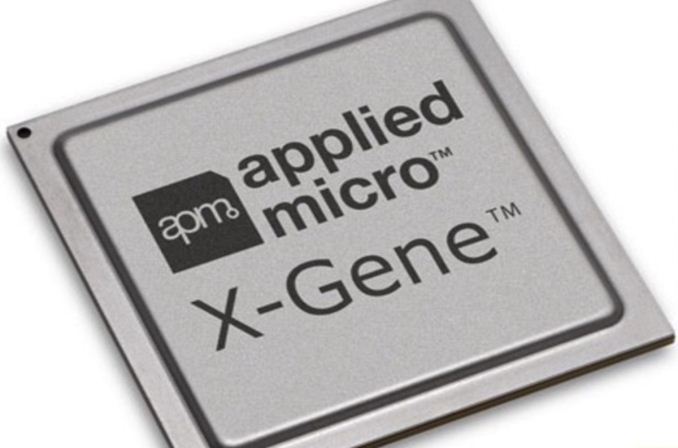
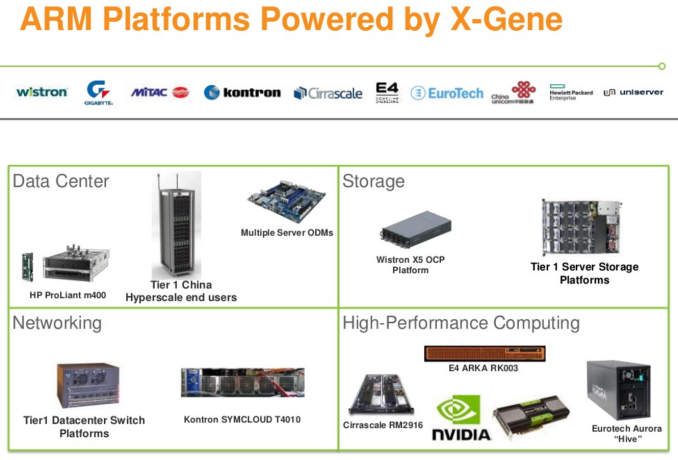
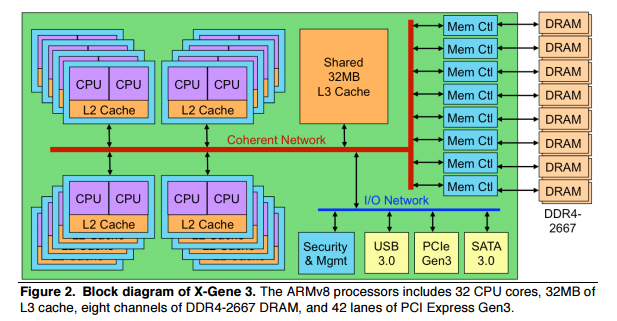
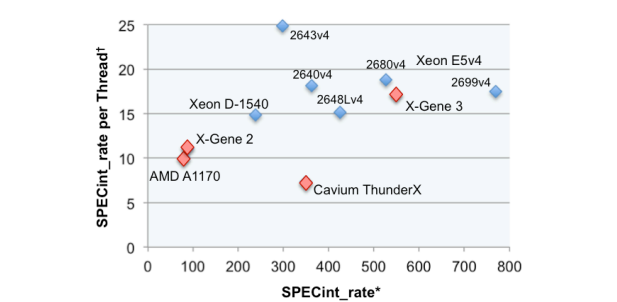
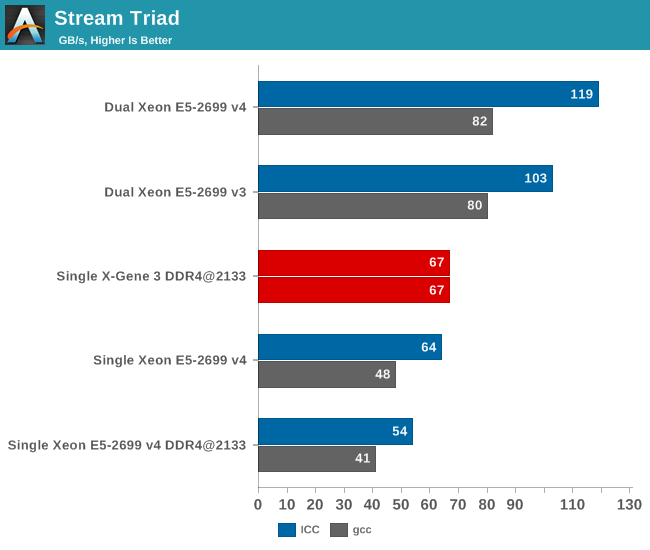
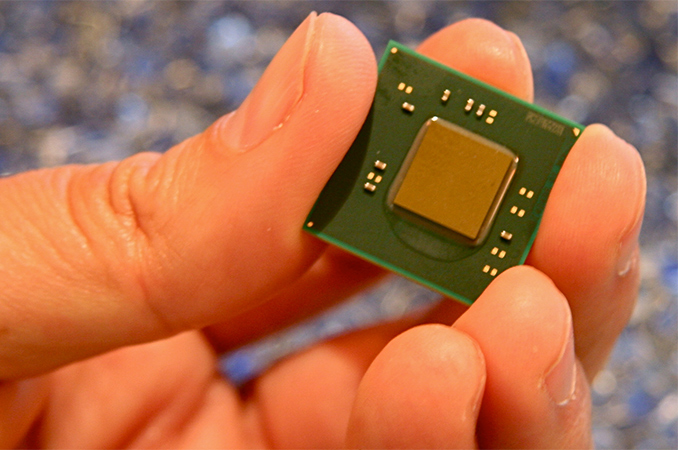
_575px.jpg)
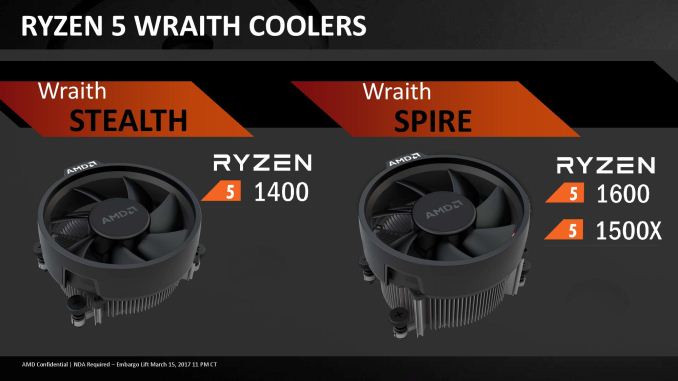
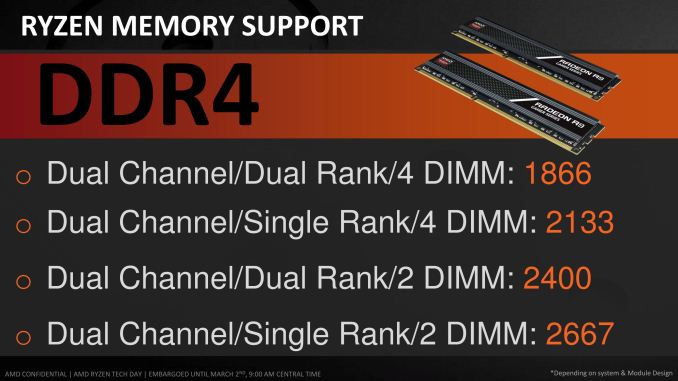
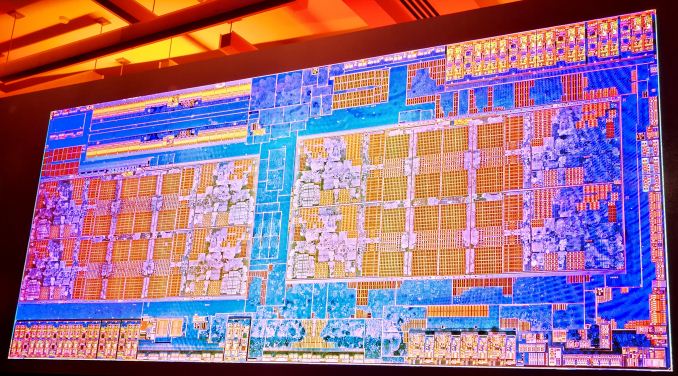
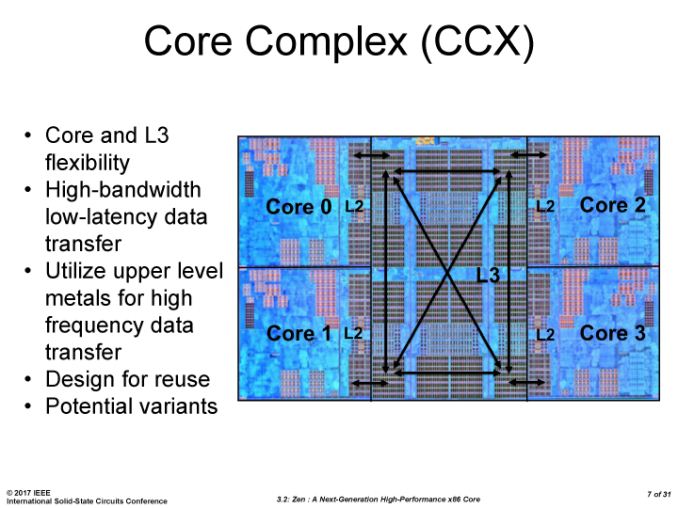
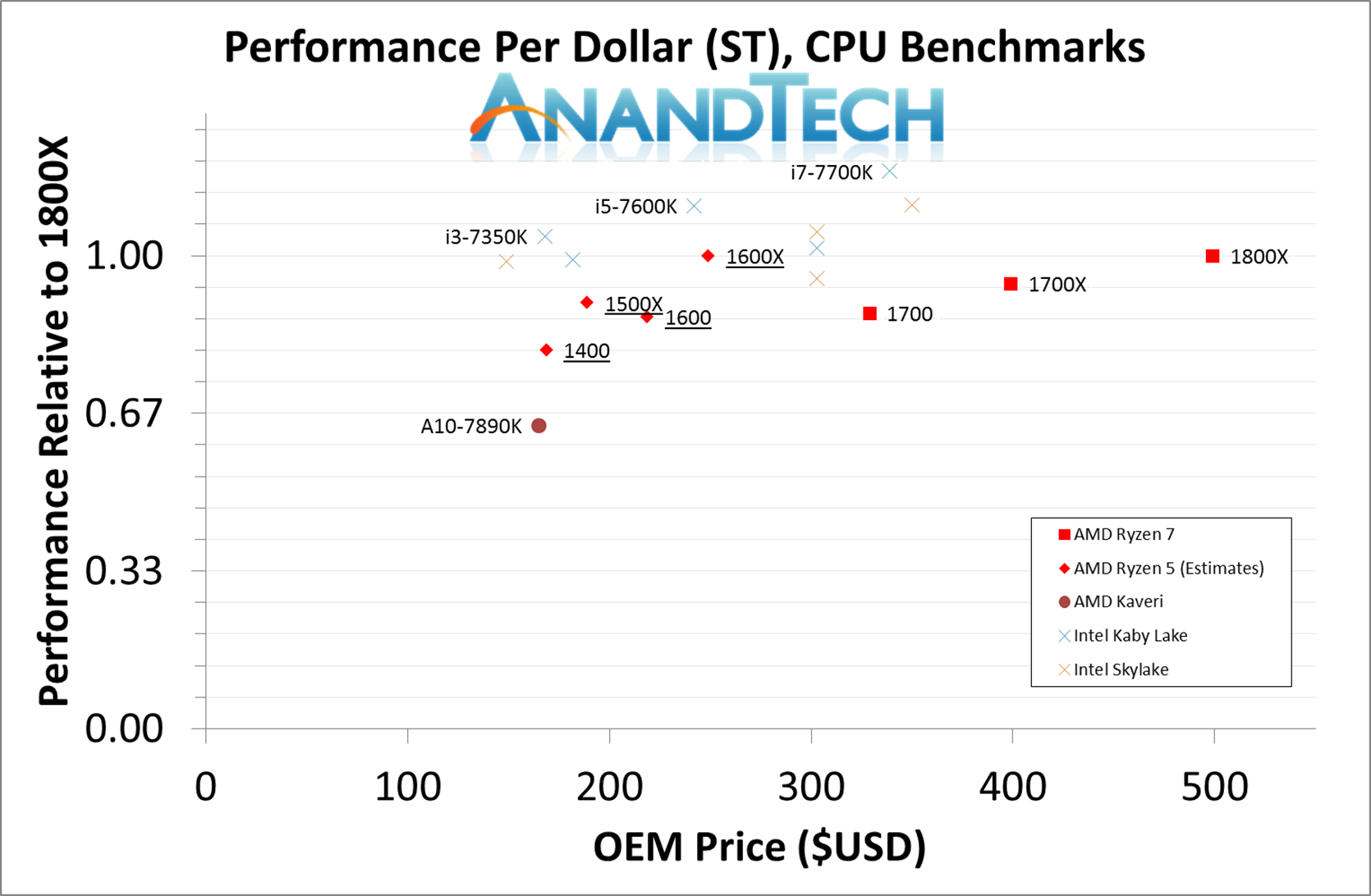


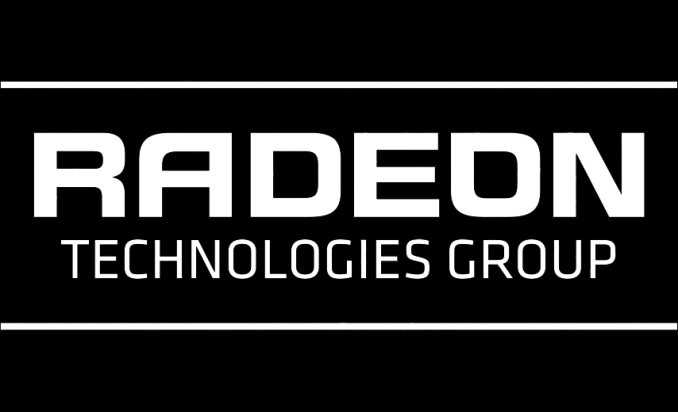
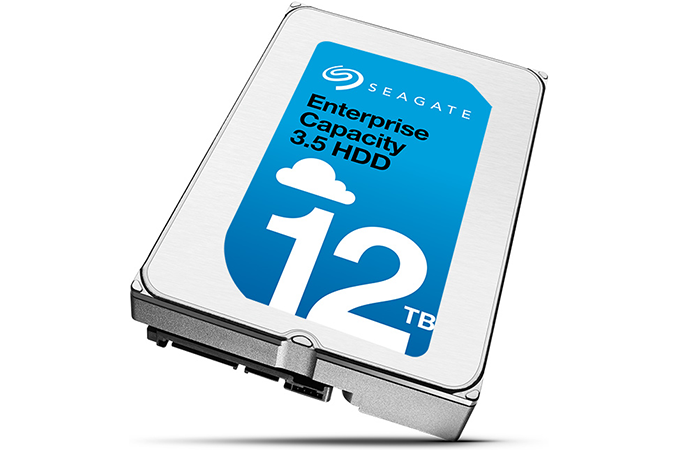
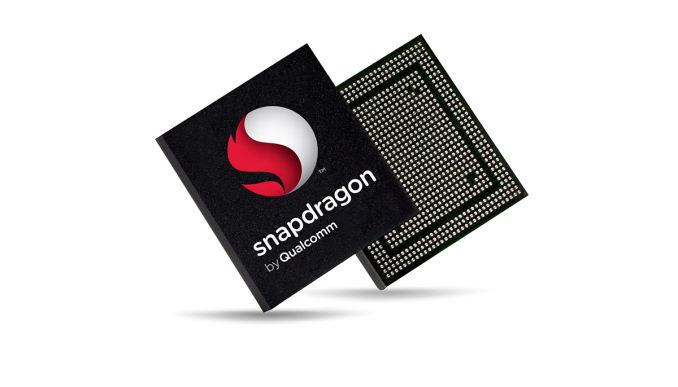




















Bookmarks